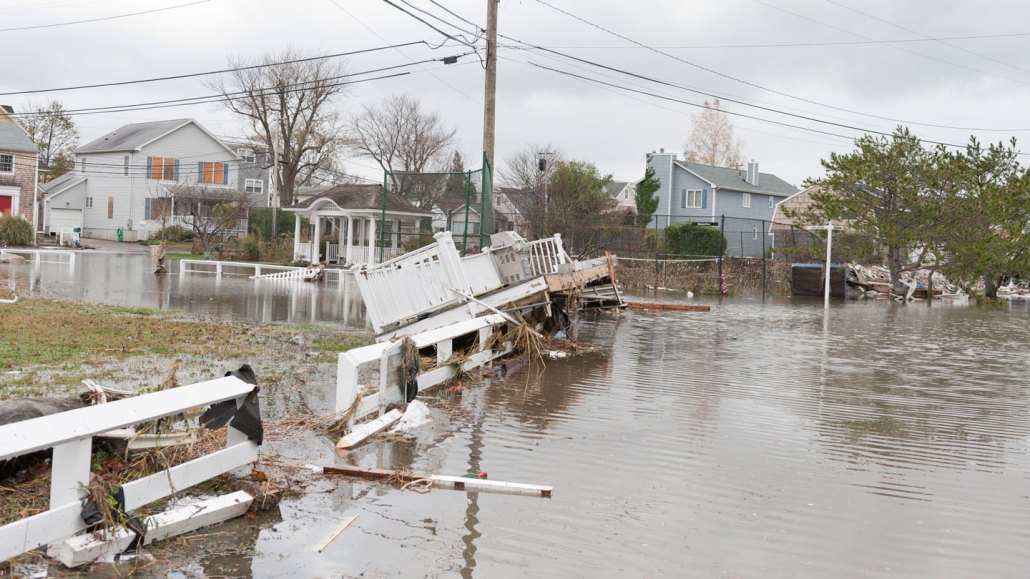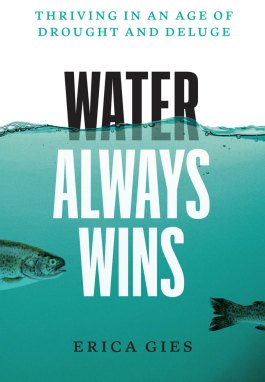In the battle of human vs. water, ‘Water Always Wins’
A new book follows ‘water detectives’ looking for new flood and drought solutions

A porch ripped from a house lies in a flooded street in the aftermath of Hurricane Sandy, which pummeled the eastern United States in 2012.
jonathansloane/E+/Getty Images Plus
- More than 2 years ago

Water Always Wins
Erica Gies
Univ. of Chicago, $26
Humans have long tried to wrangle water. We’ve straightened once-meandering rivers for shipping purposes. We’ve constructed levees along rivers and lakes to protect people from flooding. We’ve erected entire cities on drained and filled-in wetlands. We’ve built dams on rivers to hoard water for later use.
“Water seems malleable, cooperative, willing to flow where we direct it,” environmental journalist Erica Gies writes in Water Always Wins. But it’s not, she argues.
Levees, which narrow channels causing water to flow higher and faster, nearly always break. Cities on former wetlands flood regularly — often catastrophically. Dams starve downstream environs of sediment needed to protect coastal areas against rising seas. Straightened streams flow faster than meandering ones, scouring away riverbed ecosystems and giving water less time to seep downward and replenish groundwater supplies.
In addition to laying out this damage done by supposed water control, Gies takes readers on a hopeful global tour of solutions to these woes. Along the way, she introduces “water detectives”— scientists, engineers, urban planners and many others who, instead of trying to control water, ask: What does water want?
Sign up for our newsletter
We summarize the week's scientific breakthroughs every Thursday.
These water detectives have found ways to give the slippery substance the time and space it needs to trickle underground. Around Seattle’s Thornton Creek, for instance, reclaimed land now allows for regular flooding, which has rejuvenated depleted riverbed habitat and created an urban oasis. In California’s Central Valley, scientists want to find ways to shunt unpolluted stormwater into ancient, sediment-filled subsurface canyons that make ideal aquifers. Feeding groundwater supplies will in turn nourish rivers from below, helping to maintain water levels and ecosystems.
While some people are exploring new ways to manage water, others are leaning on ancestral knowledge. Without the use of hydrologic mapping tools, Indigenous peoples of the Andes have a detailed understanding of the plumbing that links surface waters with underground storage. Researchers in Peru are now studying Indigenous methods of water storage, which don’t require dams, in hopes of ensuring a steady flow of water to Lima — Peru’s populous capital that’s periodically afflicted by water scarcity. These studies may help convince those steeped in concrete-centric solutions to try something new. “Decision makers come from a culture of concrete,” Gies writes, in which dams, pipes and desalination plants are standard.
Understanding how to work with, not against, water will help humankind weather this age of drought and deluge that’s being exacerbated by climate change. Controlling water, Gies convincingly argues, is an illusion. Instead, we must learn to live within our water means because water will undoubtedly win.
Buy Water Always Wins from Bookshop.org. Science News is a Bookshop.org affiliate and will earn a commission on purchases made from links in this article.







